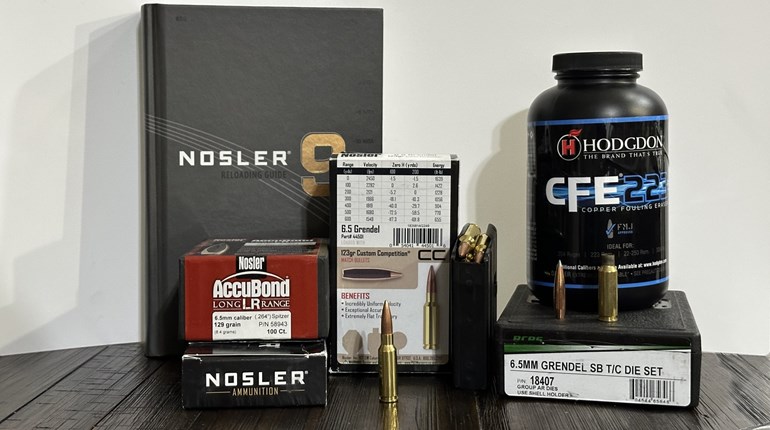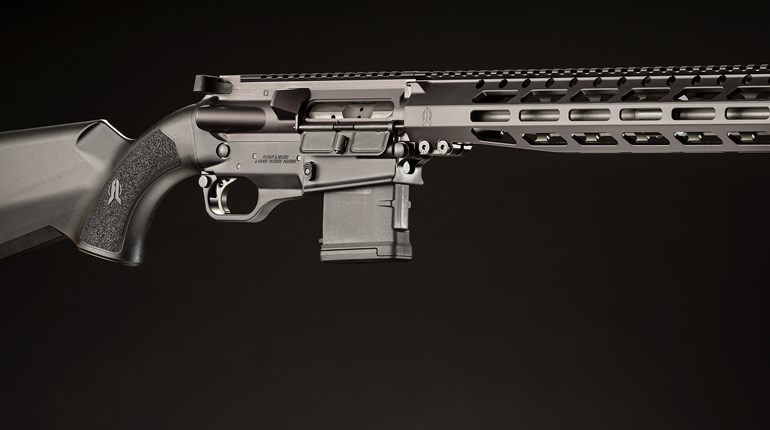
It’s hard to trump the numbers. When you add up all the military, law enforcement and recreational shooters who own and shoot AR-pattern rifles, it’s an impressive total. The best estimate is about 3.5 million, and growing fast.
There’s no mystery as to why. Military/LE owners are often shadowing a duty rifle: With training budgets as they are, this is as wise as it is unsurprising. The sport shooting community, including a rapidly growing number of multi-gun competitors, has even more varied rationales, including historical interest, skillset development and defensive applications. Underneath it all is a simple truth: The AR is a great rifle.
There’s less agreement about the attributes of what we’d call the “native” caliber—5.56x45 (rough civilian equivalent is the .223 Remington, and ARs can generally be fed either ammunition). While 5.56 is inexpensive and very controllable, and hence a good training/instructional round, it has one perceived Achilles’ heel—power. This is no “bigger is better” affectation, either. The .22 calibration of most AR rifles excludes them in many states from another of America’s favorite pastimes—hunting. But perhaps the best feature of the AR is versatility, and not just in external fitments. Calibers are surprisingly easy to swap out, too, and give access to lots of other applications for America’s favorite rifle.
Here’s our rundown of the most practical AR caliber alternatives (and it won’t require visits to 366,421 websites):
5.56x45 or .223 Remington: As we said, this is what most would call the “native” AR caliber. Derived at the request of the U.S. Army to increase ammunition load-out over more powerful but considerably heavier .30-caliber rounds and rifles, it has been soldiering since 1962. On the low end of the moderate range of power, middling bullet weights produce roughly 3,100 f.p.s. velocity and 1,300 ft.-lbs. of energy at the muzzle. This makes it reasonably flat shooting out to 300 yards, but relatively light bullets (most between 55 and 70 grains) shed their energy quickly. Truth be told, most folks will never make good use of more “oomph” unless they wish to hunt big game.
.25-45 Sharps: This is the obvious newcomer to the medium power group. It is recommended by its extreme interoperability as well as impressive performance: Only the barrel need be swapped. Magazines, bolts and springs all match 5.56 values, including round count. With a slight 10-percent recoil jump, you gain about 40 percent more downrange energy from the .257” projectile. The 3,000 f.p.s. velocity at the muzzle also makes it very flat-shooting. A complete upper is the easiest changeover method. Both varminting and big game are within the .25-45 Sharps envelope (up to deer).
6.5 Grendel: This Grendel (there are others) essentially combines a .220 Russian case with a .264” bullet in a standard-length AR lower. Heavier bullets mean reduced velocity relative to the 5.56, but not by much. The payoff is considerably greater energy delivery beyond 400 yards (50 percent more). Conversion is most efficient by swapping to a dedicated 6.5 upper, which is easily done in under a minute by a practiced hand. Barrel and bolt differences are also handled best in this way, though your 5.56 magazines will work just fine, albeit with a reduced round count. Because caliber is above .24, the Grendel is a viable and legal hunting round nearly everywhere.
6.8 mm SPC: 6.8 is a Remington alternative to the 5.56, and was specifically designed to give a standard-length AR more wallop. It falls neatly between the 5.56 and 7.62 in terms of performance, and has many fans among serious shooters. Accuracy is excellent, and usual 110-, 115- or 120-grain .277” bullets deliver up to 44 percent more energy than the 5.56, while maintaining better performance in shorter barrel lengths. Like most of the mid-range power alternatives, a 6.8 upper (which harbors the necessarily different bolt face and barrel changes) will go right on your existing AR lower. While you’ll hear of people interoperating with their 5.56 magazines, this has a poor reputation for reliability. Once again, bullet diameter makes the SPC a viable hunting round.
.300 Whisper/AAC Blackout: These cartridges are not precisely identical, but the ballistic differences are trivial. The Whisper/Blackout bears little resemblance to either of the 6.x cartridges, and gets its legendary performance mainly from heavy bullets (up to 250 grains) and fast-twist barrels. Velocities are considerably lower (roughly 2,100 f.p.s. for supersonic; the big subsonic boys are 1,040 f.p.s.). Reloaders can form cases from .223/5.56 brass, so can use a standard bolt and magazines. Originally designed for sledgehammer performance in suppressed weapons, splendid accuracy soon became apparent too. We remember hearing an early .300 Whisper fan describe its looping ballistics in these terms: “Who cares if it’s indirect fire, as long as it’s accurate indirect fire.” Good point. As a hunting option, it should be classed with the .30-30 or 7.62x39—sufficient, but relatively short-ranged.
There are literally dozens of other calibers that you can configure for AR-pattern use. Generally though, these are the most straightforward. We’ve recently had good looks at a 9 mm and a 7.62x51, and heartily recommend either of those too.
Whichever formula gets you out shooting more, we’d call it good.



































